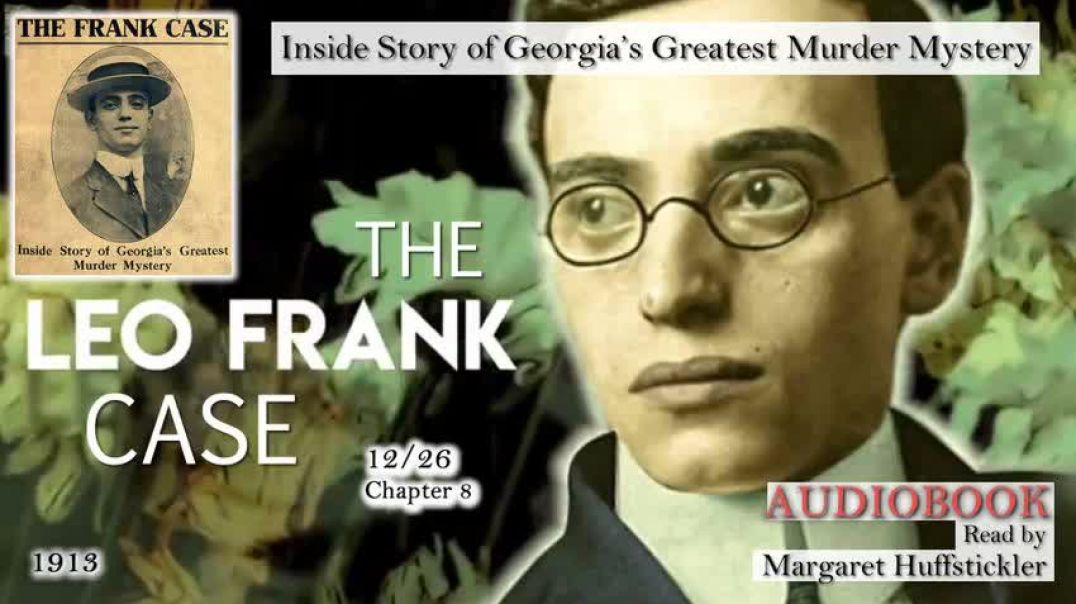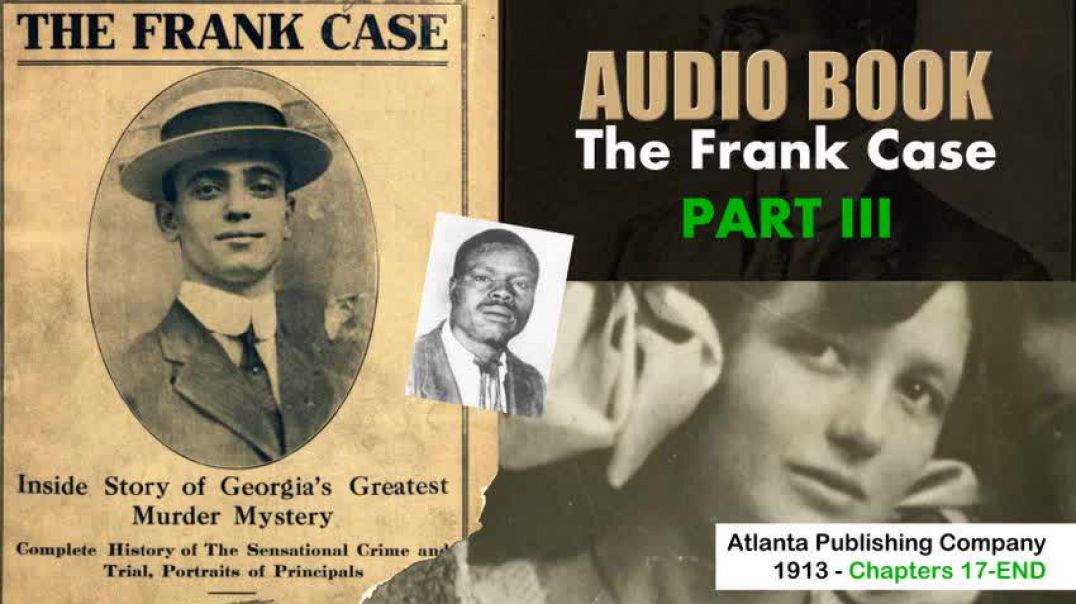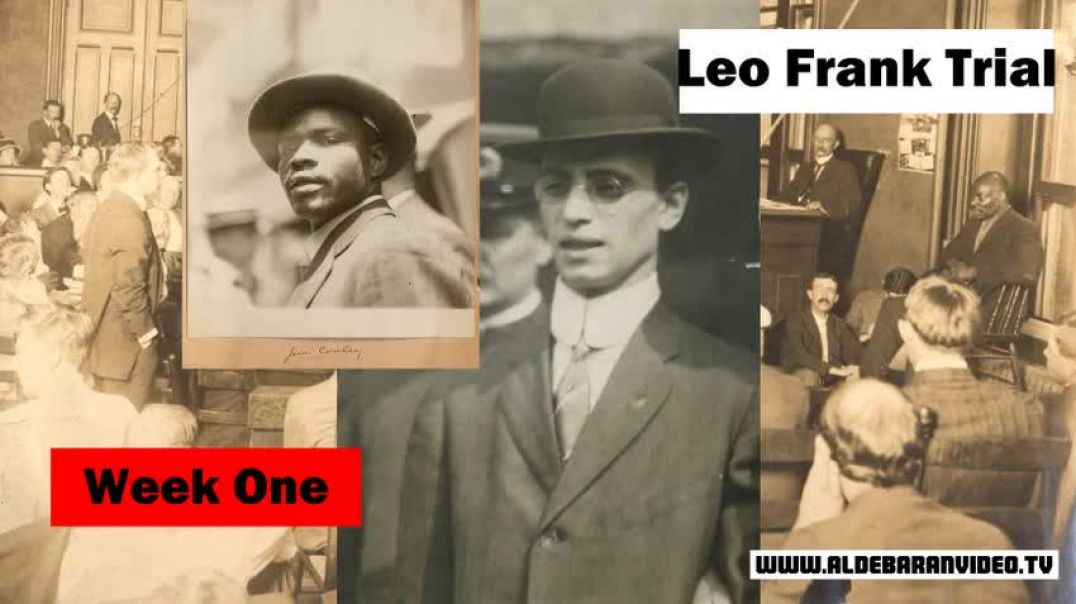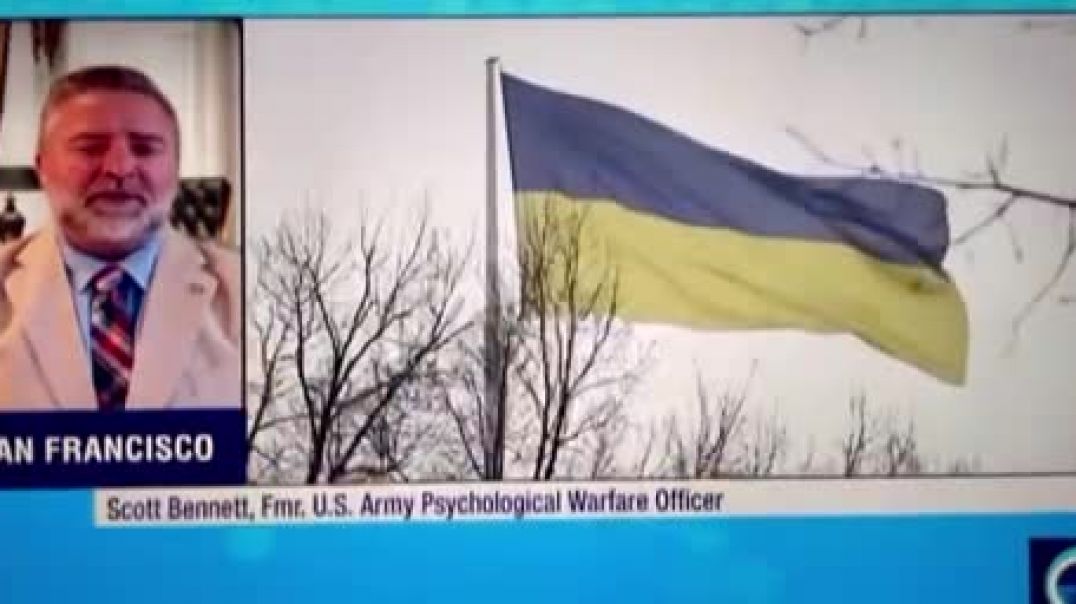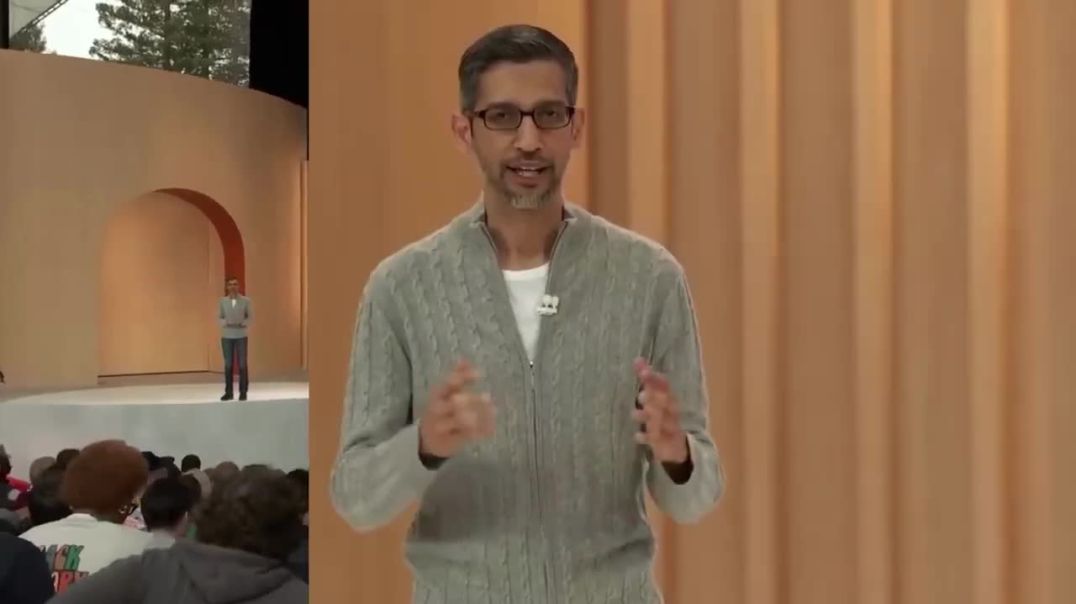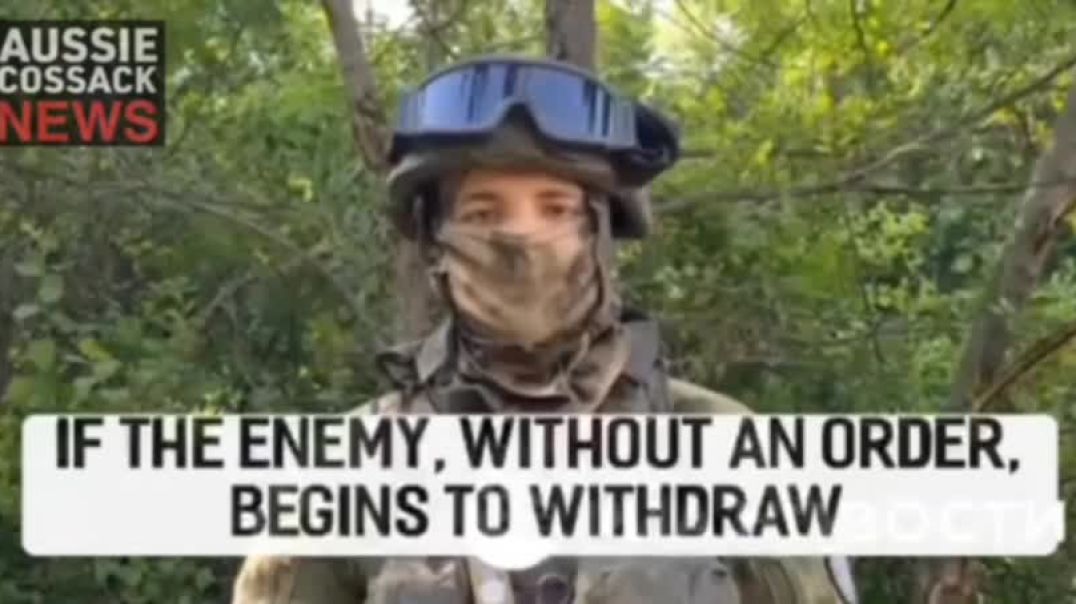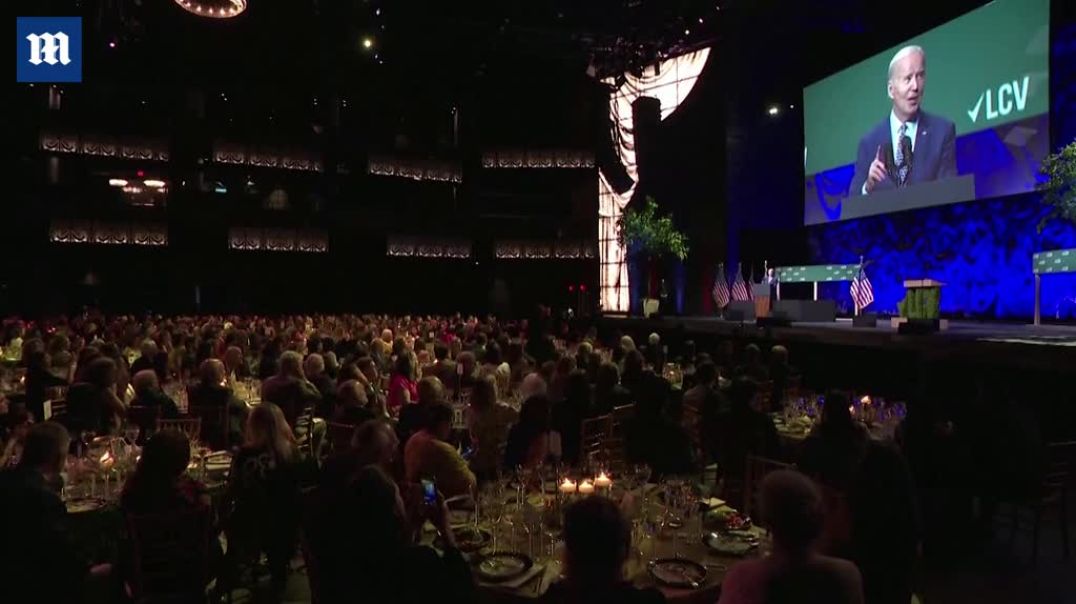Top videos
Australian National Review Founder Shares his Thoughts on the Idea of a Amnesty for the Government O
Australian National Review Founder shares his thoughts on the idea of a Amnesty for the Government Officials that pushed the deadly Bs 19 jabs upon a to trusting population and what exactly should happen to them.
He shares also why to continue the work of exposing the Australian Government Fraud with Australian National Review he had to leave Australia
Australian National Review
Www.anrnews.com
Www.truthbook.social
China's Zhongzhou, home to Foxconn's massive iPhone factory, will begin to enforce mobility restrictions across eight districts in main urban areas on Friday. The reason, well, authorities blame it on 'rising Covid infections,' though we should note that the new restrictions come as massive unrest has erupted at the factory of more than 200,000 workers.
Zhongzhou authorities posted a statement on its WeChat page on Wednesday about mobility restrictions from Friday through Sunday.
"At present, the epidemic situation in our city is still severe and complicated," the statement said. Health officials will conduct daily mass PCR tests and request that residents in high-risk areas stay within their homes.
You can find more about the chaos unfolding at the iPhone factory below...
* * *
On Wednesday, unrest broke out at Foxconn's massive iPhone factory in Zhengzhou, central China, reported Bloomberg. Videos on social media showed hundreds of workers, if not more, clashing with security personnel after a month of strict Covid restrictions.
Manufacturer Foxconn confirmed the outbreak of "violence" and said it would work with local authorities to quell further violence. It released a statement that said workers were furious about pay and living conditions.
"Regarding any violence, the company will continue to communicate with employees and the government to prevent similar incidents from happening again," the world's largest producer of iPhones wrote in a statement.
As Covid infections increased across Zhengzhou and iPhone factory, Foxconn adopted a "closed loop" system for employees in October. Workers were forced to live on campus and were prohibited from physical contact with the outside world – including family members.
Then by late October, strict Covid restrictions for workers sparked minor unrest at the facilities of about 200,000 workers -- all were banned from eating in public and forced to eat meals back at their dorms.
By early November, while Beijing ramped up its zero Covid policy by locking down the surrounding metro area -- workers began to flee the factory.
Now in videos posted on Weibo and Twitter that AFP and Reuters have verified, all hell appears to have broken out as hundreds of workers clash with security guards and people in hazmat suits.
Australia To Introduce Social Credit System To Access Social Media.
Under proposed legislation citizens will need 100 points of identification to use social media and police will have access to accounts including private messaging.
EXPOSED: Why is Barnes & Nobel selling children’s books with pornographic material in it?
Tecknat Barn Svenska:Tintin och de blå apelsinerna (1964) DVDRIPPEN (Franska) Hela Filmen
A LADY WITH FAIRLY GOOD SCIENTIFIC CREDENTIALS, PROVES THAT THE SO CALLED "COVID-19" VIRUS NEVER EXISTED. IT WAS ALL A PSY OP, THE CREATION OF COLLECTIVE TERROR TO IMPOSE TYRANNICAL RULES FOR A TRANSITION TOWARD A NEW GLOBAL SYSTEM WITH THE SUBSEQUENT MASSIVE VACCINATIONS FOR CONTROL AND POPULATION REDUCTION.
NOW - DeSantis: "They required us to stand against major institutions in our society... who together were working to impose a biomedical security state."
https://rumble.com/v260o7u-per....manent-protections-a
Tecknat Barn Svenska:Bröderna Daltons hämnd (1978) DVDRIPPEN (Svenska) Hela Filmen (4D)
Can the Deep State create earthquakes ? - Part 1
[CREDIT] National Association for Gun Rights
https://www.youtube.com/watch?v=MtiHBdooY1k
🧿 RELAY BY 🧿
■ https://secondamendment.truthparadigm.tv
#2A #secondamendment #Truth #GunRights #Colorado
A new Fulton County grand jury was sworn in Monday morning by Judge W.D. Ellis, underscoring the need for immediate and vigorous attention to the Mary Phagan case. Leo M. Frank was the first witness called to recount where he was and what he was doing on the day of the murder. The only other witnesses questioned that afternoon were Mr. and Mrs. Emile Selig, where the Franks lived. Frank testified that he had previously lived in Brooklyn, New York, and that he left Brooklyn in October 1907, went abroad and returned to the United States, where he worked for the National Pencil Company, where he became Superintendent General. He described how he came to the factory as usual on Saturday morning and how business as usual continued until noon at the factory.
It was a public holiday and there were only 11 people in the factory, which made his job somewhat easier. An important detail in this document is that the stenographer, Dr. Hall, and the clerk, Alonzo Mann, left the building shortly after 12:00 when Frank began copying the order into the shipping request. When the murdered girl appeared and took the envelope, Mr. Frank handed it to her knowing that an employee would come for it. Frank admits he looked up Mary Phagan's phone number since the murder, but forgot it again. He didn't record the payment on his payslip or other records because he didn't need to.
The girl went and asked if the metal came. He said the Phagan child has not been operational since Monday due to metal supply shortages. There was $20 in the child's pay sack, part of which was from work the previous Friday and Saturday. He didn't know what her salary was because he didn't open her seal when she left. Hearing her footsteps fade into her corridor, he thoughtlessly went back to her work.
The document's most important detail is the events leading up to Mary Phagan's assassination. Witness Frank identified the girl by her number and did not fill in her payslip after handing over her envelope. He then made the startling remark that, five or ten minutes after Mary Phagan left, Leme Quinn, the head of the chip department, walked into his office and had a little chat with him. Frank then went to the fourth floor and found two boys who had worked in the factory, Harry Denham, Arthur White and Mrs. White. Then he went home and spent the rest of the afternoon at work.
He explained on his financial papers that Lee had arrived in the early afternoon and told him to come back.
After Negro returned, Gant came to pick up the shoes. Then he went home and called Lee at the factory. Then he went to bed at eleven o'clock. And he continued to talk about what happened the following Sunday. When investigators ordered him to interrogate the black man and extract a confession, Frank said he told security he knew you knew something.
Frank testified that he was unruffled by the grilling and bombardment of questions he had received. Emile Salig and his wife, Mrs. Josephine Salig, followed Frank on the witness stand. The inquest adjourned until 930 Thursday morning. Six witnesses testified, including Boots Rogers, Lemmie Quinn, Miss Corinthia Hall, Miss Hattie Hall, and J. L. Watkins and Miss Daisy Jones.
Boots Rogers testified that Mr. Frank had changed the tape in the time clock while the officers were in the factory Sunday morning after the body of Mary Phagan had been found, and that he stated at the time as the sheet he took from the clock seemed to be correct. J. L. Watkins and Miss Daisy Jones put through a searching examination by the coroner in an effort to break down Frank's statement that he had visited the factory on the day of the tragedy. The most important details in this text are that Miss Corinthia Hall, an employee in the factory, testified that Mr. Frank's treatment of the girls in the factory was unimpeachable and that she had met Lemme Quinn at a restaurant near the factory near the noon hour Saturday. J. L. Wattkins testified that he had mistaken Miss Daisy Jones for Mary Phagan when he thought he saw her on the street near her home on Saturday afternoon at about 5:00 p.m Eastern Standard Time.
Detective Harry Scott of the Pinkerton Agency was one of the first witnesses called, and he testified that Herbert Haas, one of Frank's attorneys, had requested him to withhold all evidence from the police until Haas himself had considered it. Detective John Black followed Scott on the stand and told of finding a bloody shirt at Lee's home on the Tuesday afternoon following the murder. Newt Lee was recalled to the stand and said that when he and Frank conversed together at the police station that Frank told him if you keep that up, your story, Newt will both go to hell. Frank was recalled to the stand and testified in The most important details in this text are the character witnesses who testified in the Phagan case. Miss Nellie Wood of Eight Corporate Street and Mrs. C. D. Donaghan of 165 West 14th Street testified that Frank had come to her and put his hands on her when it was not called for, that he was too familiar and she didn't like it, and that Frank had tried to pass it off as a joke.
Coroner Donohue began to deliver his charge to the jury, saying that they had heard the statement of the county physicians, seen what caused death, seen the body and heard the evidence in the case. The coroner's jury in the case of Mary Phagan's death was tasked with investigating the cause of death and determining who is guilty of the murder. The jury was also responsible for holding witnesses who were essential in trying the case, and for committing anyone who was concealing information. The six men forming the jury filed one by one out of the door, and the crowd waited for 20 minutes before the foreman stood up and announced the verdict. The coroner's jury had a duty to inquire diligently as to how Mary Phagan came to her death and to determine at whose hands death came.
The coroner's jury ruled that Mary Phagan had been strangled and recommended that pencil factory manager Leo M. Frank and her night watchman Newt Lee be detained for a grand jury autopsy. Frank was reading the afternoon newspaper in Tower Hall when the news broke. He declined to comment further, but Newt Lee was clearly shocked when the news broke. When the news came in, he looked defeated and very depressed.
Judge Roan announced at noon on Wednesday that he would reverse his decision and strike Conley's testimony regarding perversion and his prior acts of watching for Frank from the records. After making a motion to have the audience leave the courtroom, Attorney Arnold asked the judge to declare a mistrial after Judge Roan refused to do so. Following Dalton's departure from the stand and Dr. F.H. Harris finished testifying on Thursday morning, the state prosecution took a break. The defense presented their case right away, with Dr. Leroy Childs claiming that many of Dr. Harris' deductions were merely educated guesses. The defense called back Pinkerton detective Harry Scott on Thursday in an effort to prove that Conley had received training before giving his police statements.
Daisy Hopkins refuted Dalton and James Conley's claims that she ever went to the pencil factory with an immoral intent on Friday, the eighth day of the trial. On this day, the defense presented a cardboard replica of the pencil factory, which was used throughout the remainder of the trial to illustrate witness testimony. George Epps' testimony was contested by W.M. Matthews, and W.T. Hollis, the driver and conductor of the vehicle that the girl used to travel into town. Additionally, civil engineer Albert Kaufman introduced blueprints for each floor of the Pencil factory.
Crowds gathered outside the courthouse became louder and more agitated during the fourth week of the trial, heightening tension throughout the city. Leo M. Frank, who was the most composed person directly involved in the case, maintained a constant demeanor and expression. The pressure didn't bother his mother or wife either. In order to console B'nai B'rith President Moses Frank, the defendant's millionaire uncle, Rabbi David Marx of the Atlanta synagogue postponed a trip to Europe. The way the young man's friends stood by him in his hour of need was the most amazing aspect of the entire Frank case. The references to the defendant and the arguments made to the jury that brought about the famous trial's conclusion are the most crucial details in this incident. Four eminent attorneys, including Luther Z. Rosser, made these references. Reuben R. Arnold, and solicitor Dorsey. The four top lawyers argued that Frank was a mental powerhouse with a brain that, when directed in the right direction, was capable of great things. Frank had more intelligence than either of them, according to Luther Z. Rosser, and his account smacked of veracity.
Although the defendant was not perfect, according to criminal Attorney Reuben R. Arnold, he was a moral gentleman. The state has based its case on Conley's statement, and as such, it stands or falls with it. This is one of the text's most crucial details. Hugh M. Dorsey, the solicitor, disagrees with the unprotected, underprivileged, working girls who accuse him of having a bad character. He thinks that the only thing this man has is a reputation, and no other qualities. He merely possesses a reputation; he lacks character. To preserve his reputation, he strangled Mary Phagan; her blood is visible on his hands. Frank A. Hooper asserted that the defendant, like Dr. Jekyll, abandoned his façade of respectability and descended to a lower social level, where he chose to associate with Dalton and people of a similar disposition rather than the men who had come to endow him with a good reputation. The factory was a great place for a man with lust and no morals, and a crime was planned. Attorney Dorsey argued that on the Saturday before the murder, Frank was riding the Hapeville Line with a young girl, and he made several attempts to get her out of the car. One of the factory workers, Miss Emily Mayfield, refuted this testimony, saying she had never witnessed the superintendent act inappropriately toward the female workers.
At noon on Saturday, the second week of the trial came to a close with Herbert Schiff, the assistant in Frank Young's office, testifying. Schiff asserted that it was Frank's habit to prepare the financial statement every Saturday afternoon and that it was impossible for the task to be finished in less time than two to three hours. The most significant information in this text is that Dr. Willis Westmoreland, a former State Board of Health president, and Dr. T.H. Hancock, Doctor J.C. Olmstead and Dr. George Bachman stated that it was only a guess on the part of any doctor to try to determine the time of death based on the state of the food in a corpse's stomach.
On August 11, the defense once more attacked Dr. Harris' testimony, and they called several witnesses who swore they would not believe C.B. Dalton. To connect the time alibi to the stenographer and bookkeeper for Montauk Brothers, Miss Hattie Hall, was contacted. She described how she had met Frank at Montague Brothers the morning of the murder and that he had asked her to come to the factory and steno for him. According to Miss Hall's testimony, she stayed at the factory until two or three minutes after twelve and timed her departure to coincide with the blowing of the 12:00 whistle.
According to Joel Hunter, a highly qualified accountant and mathematician, Frank could not have finished the financial report in much less than 3 hours, and there was additional small-scale work on the office account books that would take him anywhere between 30 minutes and 2 hours longer. The defense team for the accused superintendent defied the state's request to call witnesses who would cast doubt on his character on Wednesday, the fifteenth day of the trial. His character was outstanding, according to two former Cornell Nell of New York classmates who traveled to Atlanta only to give testimony. Several college professors and Frank's former classmates traveled far south to be by his side during his time of need.
The defense tried to introduce evidence of four men who acted out Conley's story of carrying the body to the basement, but solicitor Dorsey and attorney Hooper vehemently objected. These are the most crucial details in this text. After detailing the other alleged behaviors of Conley and Frank on the day of the murder, Dr. William Owens described how three other men had carried a sack weighing 110 pounds, the same as Mary Phagan's body, into the basement. During cross-examination, Attorney Hooper made an effort to downplay the importance of the experiment and produced a letter he had written to the grand jury in advance of the trial requesting that Conley be charged as an accessory. When John Ashley Jones took the witness stand and spoke about Frank's moral character, the state launched its first assault on the superintendent's reputation.
Dorsey was quickly on his feet and asking one question after another when the witness was handed over for cross examination. In her seat, the defendant's mother, Mrs. Ray Frank, turned to face the attorney. Herbert Haas, a member of the Frank party, and other men led Mrs. Lucille Frank out of the courtroom. For the first time since her husband's trial began, Mrs. Lucille Frank displayed significant emotion, and the accused man's face flushed when the solicitor lobbed his sensational question at the witness. At this point, the courtroom fell silent as the solicitor abruptly concluded his examination and sat down. Mrs. Ray Frank stayed out of the courtroom all afternoon, but she showed up in a car at adjournment and gave her son his customary goodnight kiss.
This attempt by Solicitor Dorsey to have the jury hear the implications of these questions was fiercely resisted by the defense. The strategies employed by Mrs. Leo and Mrs. Ray Frank, according to attorney Arnold, were unfair, unjust, and unethical. But on August 14's first morning, attorney Dorsey requested that Mrs. Leo and Mrs. Ray Frank not be allowed inside the courtroom. When the women agreed to stop interrupting, Judge Roan declined to comply with the request. At ten minutes after 1:00, Ms. Helen Curran of 160 Ashby Street testified that she saw Frank standing in front of a pharmacy. Selig's friends testified that Frank didn't show any signs of anxiety on the evening of Saturday, April 26.
Solicitor Dorsey made an effort during cross-examination to highlight the fact that Frank tried to appear too carefree on this night and to draw attention to himself by laughing so loudly. On Saturday, August 16, Mrs.
Ray Frank took the witness stand in the afternoon and pointed to a letter with the date of April 26 that was supposed to be written by her son. It was addressed to his well-to-do uncle, Moses Frank, who was traveling to Europe and was then currently in New York. The letter included a price list, a report from the factory, and a letter from Lucille to her nephew.
Moses Frank, who was in New York en route to Europe, received the letter. The 100 witnesses who attested to Leo Frank's moral character—the majority of whom were girls working on the fourth floor of the pencil factory—are the most crucial information in this document. Then Mrs. E.H. Carson, one of the initial witnesses, stated that she had never heard any criticism of Frank regarding the factory and that she believed him to be a good person.
When Miss Irene Jackson was called by the defense as a character witness, she stated that Frank had arrived at the door of the girl's dressing room on the factory's second floor and stood there staring at the people inside. Conley was locked up in the county jail when a reporter for the Atlanta Journal, Harley Branch, spoke with him. Branch reported that Conley had denied seeing Lemmie Quinn enter the factory on Saturday, April 26. The witness's involvement with the city detectives was revealed during cross-examination by Attorney Dorsey. To disprove Dr. William Owens' testimony, James Conley performed a pantomime reenactment of the body being hid on the day of the crime. Most of the workers at the factory claimed that Conley had a poor character and that they would not believe him if he gave an oath.
After the court's Friday, August 16, non-adjournment, attorneys made threats. The gathering of the evidence had taken three weeks, and it was still far from over. The trial continued until almost the middle of the fifth week. It had put a tremendous strain on each of the attorneys, who were nearly exhausted. The court met every day at 9:00 and met until 12:30, when it broke for dinner. This took place for one and half hours during the morning. The court resumed at 2:00 in the afternoon, and it wasn't until 6:00 in the evening that the adjournment was made. Luther Rosser had lost 25 pounds and solicitor Dorsey had turned pale and uneasy, so all the lawyers were on high alert. Receiving numerous threatening letters from all over the state added to the difficulty the defense attorneys faced while working. While his brother, attorney Rosser, had two men by his side at all times, Ruben Arnold was followed by a bodyguard of three men. The lawyers for both sides received a deluge of telegrams and letters from all over the country offering counsel and condemnation. One man from Nashville, Tennessee, spent at least $100 sending Mr. Rosser advice and pointers on how to present the defense case.
The most crucial information in this passage is that on Monday afternoon, Frank took the witness stand by himself and delivered the most remarkable statement ever heard in a Georgian criminal courtroom. His testimony was so impressive that many people began to think he was incapable and innocent of the crime being brought against him. Frank started making his statement at five minutes after two in the morning and finished at four. He was twice cut off by Solicitor Dorsey, who objected to the display of items not entered as evidence, and he also took a break to get a drink of water. His voice was just as clear when he was finished as it had been at the beginning of the ordeal. His auditors were rendered speechless by his final phrases. After Frank finished speaking, there was a brief moment of complete silence in the courtroom before Mrs. Leo Frank's sobbing and Attorney Arnold's laconic order broke the silence. With the same confidence and vigor as when he had first walked onto the stand four hours earlier, Frank exited it. Mary Phagan, a young Brooklyn girl, was allegedly murdered by Leo Frank.
The sheriff took him to his quarters in the tower, where he was calm and in full control of his faculties. He mentally performed challenging mathematical operations, gave a brief account of his life, and refuted the claims of Jim Conley, a Black man whose sworn statement has brought him dangerously close to the death penalty. His mother and father only have enough money to get by, he has no wealthy relatives in Brooklyn, and his father is a disabled person. His legal counsel will be compensated by the sale of a portion of his parents' estate because there is no fund set aside for his defense. As part of his circumstantial defense, Frank got up from the witness stand to describe the tasks involved in creating the factory's weekly financial statement. He spoke to the twelve men who have the power to put him to death with the same sincerity as if his life were not on the line.
On April 26, the narrator awoke between 7:00 and 7:30 in the morning, leisurely showered and dressed, ate breakfast, boarded a Washington Street or Georgia Avenue car, and arrived at the factory on Forsyth Street at around 8:30. He went to where he normally found Mr. Holloway, the day watchman, and greeted him there. The office boy, Alonzo Mann, was in the outside office. The narrator opened their desk, took off their hat and coat, and unlocked the safe. Miss Maddie Smith requested the pay envelopes of her sister-in-law and herself from the narrator at 9:15 o'clock.
When Mr. Schiff gave them the package of envelopes the previous evening, the narrator went to the safe, unlocked it, and took the contents out. The remaining envelopes were positioned in their cash box. About 9:35 or 9:40, Mr. Darley and the narrator left for Montague's. En route, they stopped at the intersection of Hunter and Forsyth streets for drinks at Crookshank's Soda Water Fountain, where the narrator also purchased a pack of his preferred cigarettes.
The narrator and Frank shared a drink and talked for a while. They then went to Montague Brothers, where they spoke with Mr. Sig Montague, the company's general manager, and Miss Hattie Hall, the pencil company's stenographer. Miss Hattie Hall, Mrs. Arthur White, and the office boy were waiting for them when they returned to Forsyth Street alone. The elevator motor then began to run, and the carpenter's shop circular saw also began to operate. Upon entering, Mrs. Emma Clark Freeman and Miss Corinthia Hall requested permission to go upstairs and retrieve Mrs. Freeman's coat.
Two men entered, one of whom was Mr. Graham and the other was Earl Burdett's father. The two boys had gotten into some sort of trouble the day before during the noon break, and they had been taken to police headquarters, which is a very crucial piece of information in this passage. The narrator spoke with the two fathers while handing them the necessary pay envelopes and asking them about the mischief their sons had gotten into. Mrs. Emma Clark Freeman entered the narrator's office and requested permission to use the phone just before they left. The narrator called for Miss Hattie Hall and told him what mail to deliver.
She left the office and came back when the 12:00 whistle sounded. Frank went into great detail about the pencil factory method of recording orders. Mary Phagan, a young child, asked the narrator for her pay envelope after Miss Hall had left the office. Despite not knowing her name, the narrator recognized her from seeing her around the plant. She had reportedly worked in the metal department before being let go because some metal hadn't arrived at the factory.
The plant's foreman, Lemmie Quinn, entered and inquired about the whereabouts of Mr. Schiff. After completing their work and requisitions, the narrator looked at their watch at quarter past one and continued working. When they dialed their number, Minola answered and said they would have lunch right away. The narrator then collected their papers and went upstairs to visit the boys who were on the top floor. It was 12:35, according to Mrs. Arthur White, when she passed by and noticed the narrator.
The narrator is unaware of what happened. The narrator saw Arthur White, Harry Denham, and Mr. White's wife when they arrived upstairs, which is one of the most crucial details in the document. When the narrator asked if they were prepared to leave, they replied that they had set up some work. The narrator then went downstairs, gathered their papers, locked their desk, washed their hands, put on their hat and coat, and locked both the inner door to their office and the doors leading to the streets. When the whistle for 12:00 blew, the narrator remained in the inner office until after quarter past one, when they spoke to Arthur White and Harry Denham. The narrator might have gone to the restroom in response to a natural urge (i.e. nature's calling).
The defense witness' testimony that she was unaware of any wrongdoing by the defendant and that she had never engaged in any such behavior with him drew objections from attorney Rosser. Attorney Dorsey argued in response that the testimony was given in rebuttal to James Conley's testimony and that it would not be admissible if the witness attempted to prove a separate crime. The defense's witness testified that she was unaware of any wrongdoing on the part of the defendant and that she had never engaged in any wrongdoing with him before the jury was dismissed. Attorney Rosser objected to her testimony. Attorney Dorsey argued in response that the testimony was given in rebuttal to James Conley's testimony and that it would not be admissible if the witness attempted to prove a separate crime. It was decided by attorney Rosser that the defense witness must first return to the witness stand for cross-examination.
This was based on his assertion that a defense witness had testified about actions taken in Frank's office.
Ms. Griffin then asked the witness if she was familiar with Leo M. Frank's general demeanor toward women.
When the solicitor asked questions, Miss Myrtice Cato responded that she was aware of Frank's general demeanor and that it was undesirable. In response to the solicitor's queries, Mrs. R.M. Donegan stated that she was familiar with Frank's personality in general and that it was negative. In 1910, Mrs. H.J. Johnson of Stonewall, Georgia, who was contacted, claimed to have spent two months working at the pencil factory.
She claimed that Frank had a poor reputation in general and that she didn't know a lot about his relationships with women. The court ruled that the solicitor was not permitted to ask any more questions, and a large number of women quickly followed. One of the women was prepared to give a deposition claiming that Frank had made an inappropriate proposal to her in his private office and that she had used a monkey wrench before leaving the space. Miss Dewey Hewell was brought to Atlanta from the good shepherd's house in Cincinnati to give a testimony about Frank's acquaintance with Mary Phagan and her conversation with him. She witnessed him call her Mary, put his hand on her shoulder, and stand where he did when speaking to her.
On August 20, both parties were placed under arrest as Leo M. Frank's trial for killing Mary Phagan got under way. The State's rebuttal was completed shortly after the noon break. The introduction of sub rebuttal evidence took less than an hour. Pawn broker Nathan Sinkovitz swore M.E. McCoy had pawned his watch with him in January, and he had kept it until August. Others disputed the streetcar men's claims that Mary had not been accompanied by young George Epps when she arrived in town on the fateful day.
Frank A. Hooper, an attorney, began the state's case for Frank's conviction with an eloquent speech full of word pictures, occasionally sarcastic, occasionally pitiful, occasionally humorous, but always dramatic. He began a series of days of oratory unmatched in Georgian history.
In his opening remarks, Mr. Hooper informed the jury that the State gladly accepted the burden of proving the defendant's guilt and that the State was not seeking a guilty verdict unless the defendant was guilty. He characterized the defendant as a man who was friendly with two very dissimilar groups of associates, like Dr. Jekyll and Mr. Hyde. He compared Jim Conley to Dr. Jekyll and Mr. Hyde, a man who got along with two very different groups of friends. The most dramatic part of his speech came when he said, "Give the defendant the benefit of the doubt. The circumstances show that he either killed this little girl or sat there in his office and let the negro kill her, drag her body down the hall to the elevator, and take it down to the basement.".
While Monteen Stover was in Frank's office, this murder took place in the metal room. Attorney Mr. Hooper made the point to the jury that even though Frank had sworn he didn't leave his office between noon and midnight, the Stover girl had gone there during that time. Hooper made fewer arguments in the Frank trial than any of the attorneys who came after him. Luther Rosser took exactly the same amount of time to argue as Attorney Arnold, who took his place on the floor. In one of his longest prosecution speeches in a criminal case in the South, Solicitor Dorsey spoke for between eleven and twelve hours. The gestures of a master actor could not have been more dramatic as attorney Arnold spoke slowly, carefully selecting his words, and pausing for emphasis. His eloquence had the power to capture and hold the interest of both the jury and the audience.
He began by visualizing the jury as previously stated, sequestered, guarded, reading no papers, and hearing nothing of the public discussion of the trial in order to reach a verdict free from bias or prejudice. Then he castigated the loud-mouthed, long-tongued cretins who assume a man is guilty the instant someone points a finger of suspicion in his direction. The speaker claimed that if Frank had not been a Jew, he would not have been charged, and he criticized those who would punish the defendant "for no other reason than that he is a Jew.". He expressed respect for the jury by stating that they were far above average. He claimed that if he hadn't been a Jew, he never would have been charged, and that Negro Conley had been called to testify in court.
He pleaded with his kind to treat this man fairly before treating a Jew unfairly. In addition, he pointed out that some of the evidence in the case was prodded rather than corroborated, and that there was a particular class that was always prepared to provide evidence. The State's theory surrounding Mary Phagan's murder, according to Arnold, is illogical and ridiculous. Reuben Arnold also exposed his racism and prejudice as a White Jew against African-Americans ("Negros"). He argued that Mary Phagan's murder was brutal and typical of a Negro and that Conley had a much better chance of killing the girl than Frank did. His hypothesis was that Conley was half-intoxicated on that Saturday morning, his passions were heightened, and he was enviously eyeing every girl and woman who passed.
Conley grabbed Mary Phagan's mesh bag as she descended the stairs and struck her over the left eye, knocking her to the ground. Once Frank had left, he waited outside the factory before dropping her body through the elevator shaft, finishing his brutal work in the basement.
Attorney Arnold established the rule that, before a man can be found guilty based solely on circumstantial evidence, the evidence must be so strong as to rule out all other reasonable hypotheses besides the accused's guilt. Mary Phagan's murder can be explained just as easily, if not more easily, on the theory that Conley did it than on the theory that Frank did it, Attorney Arnold had to persuade the jury of this. Frank was the only man in the factory and had a chance to do it, so suspicion was focused on him. On the fourth floor were Mrs. White, Denham, and Arthur White. Before Frank was taken into custody, no one knew anyone was in the factory's most convenient location for crime—down by the elevator hole and/or shaft.
Mr. Starnes may believe he is pursuing justice and the truth, but he doesn't really believe this. Evidence obtained through third-degree torture, persecutory methods, or other means is dangerous evidence.
The fact that they told him he couldn't swear to that allowed Conley to create an entire narrative. The most significant information in this text is that a Negroes mock their bosses and try to learn their expressions, and that he made up a story to protect himself. Anyone who has spent any time around a courthouse is aware of this. He was aware that they were attempting to indict Frank and that they were trying to build a case against him.
The solicitor general promised to pursue the case against Frank as far as the court will allow him, which gave the detectives cause for concern that they would face criticism if they did not. The solicitor general promised to take the case against Frank as far as the court will allow him, which made the detectives fearful of criticism if they did not pursue it further. Since the solicitor general promised to take the case against Frank as far as the court will allow it, the detectives were worried they would come under fire if they did not pursue it further. The most crucial information in this passage is that Dalton had visited the factory between 1:00 and 2:00, while Frank was eating lunch. This man does not know where Dalton went inside the building; he only saw him enter through the front door.
The recording also mentions that the factory has nothing objectionable and that both the Clark Woodenware Company and the Pencil factory entered through the same door. It also mentions that the factory was under the watchful eyes of Starnes, Black, and Pat Campbell, who dared not take the witness stand for fear of being questioned about how he obtained those statements from Conley. The turmoil that has recently occurred in Atlanta is covered in the audiobook. A vice squad has been organized by Beavers to look for wrongdoers in the city, and a new decalogue has been written. Dorsey's friend Hooper asserted that while Schiff and Darley were morally repugnant, there was no evidence of Schiff's guilt or wrongdoing.
The trial's most noteworthy statement came from Solicitor General Hugh M. Dorsey. After Attorney Rosser closed on Friday afternoon, he spoke for more than 11 hours on the floor over the course of three different days. He picked up his argument on Monday morning and continued until noon to finish his speech.
Fear of returning a verdict on Saturday night was the main driver of the protracted adjournment. Dorsey thoroughly and faithfully covered every aspect of the case, and his arraignment of Frank was likely the harshest ever directed at a defendant in a murder trial in the history of the entire nation.
He was greeted with applause, and the vast majority of people praised his demeanor and his admirable efforts to ensure the conviction of the young factory superintendent. "This is not just a significant case; it's also an extraordinary case. The crime was extraordinary, horrible, heinous, and committed by a demon. The investigation into the crime required the detectives' and my own vigilance, sincerity, and diligence. The four Messers Arnold and Rosser and the two Messers Haas who have argued the case are the most crucial details in this text because of their standing and significance. Mr. Rosser, who rides the wind and stirs the storm, and Mr. Arnold, who is as mild-mannered as any man who has ever cut someone's throat or scuttled a ship, have acted extraordinarily and have defamed and abused the defendant. The detectives have attacked the defendant in such a way that the defendant's good mother stood up and called the defendant a dog in front of everyone. While Mr. Dorsey doesn't need the defendant's approval, he would doubt his own honesty if he did. Mr. Arnold thinks the detectives should have been outraged because they were motivated by prejudice.
When Mr. Dorsey inquires about the detectives' motivations, Mr. Arnold responds that they were paid to act the part. The case wasn't based on the defendant being a Jew, and the first time bias entered the case, it was brought in by two men who were happy to ask Kenley those questions, according to the text's most crucial details. The speaker contends that the defendant's ancestors were civilized at a time when ours were still eating human flesh and that the defendant's race is just as superior to ours. He respects the race that gave birth to Israeli, J.P. Benjamin, Strauss, the diplomat for Strauss, and Rabbi Marks. Becker sought men of Rosenthal's racial background when he wanted to execute Rosenthal. In New York and San Francisco, Abe Roof and Abe Hummel perished, and Schwartz was sentenced to prison for stabbing a young girl. The defendant has a poor character, and David in the past was a great man until he forced old Uriah to lead a decisive battle so he could steal his wife, according to this audiobook. Before betraying his country, Benedict Arnold was a brave man who had the respect of everyone and the leaders of the Revolutionary War. Irish knight Oscar Wilde had a good reputation up until he was found guilty. Although Abe Roof of San Francisco had a good reputation in the past, he corrupted Smith and everyone else he came into contact with. If you have a case that is supported by the evidence, good character is worthless.
The examples of crime committed by intelligent men are the most crucial information in the document. The mayor of Charlottesville, Virginia, McEwen, shot his wife while she was in the bathtub, and a jury of honorable Virginians sentenced him to life in prison. A preacher in Boston who enjoyed the trust of his followers, Richardson became involved with another young woman and wanted to get rid of her, but he lost himself to the point of murder. Henry Clay Beatty, a renowned family man, demonstrated his moral character by taking his wife for a drive and then killing her in cold blood. The detectives in that case were denigrated and abused, but a jury of Virginia farmers sentenced him to death and raised the citizens of that vast commonwealth to a higher plain.
Beatty never admitted to the crime, but he did leave a note that could be read after his death and in which he admitted to the charge. High-ranking English physician Crippen murdered his wife because he was obsessed with another woman. Jim Conley has not been impeached, but his general character has not been tarnished by anything other than the National Pencil Factory's hired mouthpieces. His relationships with Miss Rebecca Carson, Miss Jackson, Miss Kitchens, Darley and Miss Maddie Smith as to what they did on April 26 are all upheld by the failure to question these crazed fanatics, Miss Jackson's account of how he went to the dressing room, Miss Kitchens' account of how he went to the dressing room, Darley and Miss Maddie Smith's account of what they did on April 26, and Miss Jackson's account of how he went to the dressing room.
Jim Conley, a black man who works at a pencil factory, is charged with murder. He is accused of stealing sacks from the pencil factory, going into the medal room with a poor girl, hearing footsteps of two people walking away, seeing the blood on the second floor, hearing Holloway and Boots Rogers testify, seeing the blood on the second floor, seeing the noose in the cord, seeing the notes alone, seeing the blood on the second floor, and hearing footsteps of two people walking away. Additionally, it is noted that Arthur White took out a $2 loan in the afternoon, but there is no entry to support Frank's contribution to that loan. Frank also defended Conley when he mentioned that he had relatives in Brooklyn and when Mr. Rosser inquired about Mincey.
The arguments made by the jurors during the defendant, Mincey's trial, are the most crucial details in this text. The jury finds Mincey guilty of killing Mary Phagan, a young girl who died honorably and without leaving a mark. Mincey strangled Mary and killed her. The jury also holds the opinion that the defendant is guilty by virtue of every act committed by him, and that every circumstance implicates him in the murder of the young girl.
The jury is of the opinion that the defendant's mesh bag vanished in the same manner as the stick on the first floor and the bloody shirt at Newt Lee's residence. The jury also found that Mrs. Ray Frank and Mrs.
Lucille Frank, the defendant's mother and wife, both had their hands over their eyes and appeared to be affected.
The jury finally comes to the conclusion that Mincey killed Mary Phagan and that there can be only one verdict. With each intonation of "guilty, guilty," the gong on the Catholic Church, which is located a block from the courthouse, chimed, culpable, and the bell rang. Judge Roan started reading his charge right away and finished at 12:47 p.m. The protracted trial was almost over, and the jury's decision was the last thing that was needed.
There was open discussion of racial disparities and threats of violence in the event of acquittal. At 12:47 p.m., Judge Roan concluded his remarks and informed the talesmen that they alone would determine the admissibility of the evidence and the credibility of the witnesses. Before midnight, the jury was led across the street to Cafe for dinner before being led back into the courtroom. When attorney Dorsey left the building ten minutes later to cross the street to his office, the crowd picked him up and carried him. They heard cheers for Dorsey.
The jury's twelve male members were given a room on the fourth floor of the courthouse. Deputy Sheriff Plenty Minor was informed that a decision had been made by jury foreman Windburn shortly after three o'clock. Judge Roan was called from his home and called again for the second ballot, along with attorney Dorsey. In order to stop a potential outbreak, the defendant had waved his presence and stayed in his cell at the tower. The moment the jury members sat down in the individual boxes they were wearing, silence descended upon the courtroom.
The solemn gesture that was interpreted could only have one meaning. Judge Roan addressed the jury in a formal manner, asking, "Gentlemen, have you reached a verdict?". Foreman Windburn answered, "We have.".
The court commanded, "Read it.". The jury's verdict, which stated, "We, the jury, find the defendant guilty," was held in the foreman's hand as he got up from his seat. That was the final conclusion of "The Leo Frank Case".
The testimony of night watchman Newt Lee, who had discovered 13-year-old Mary's body in the basement of the pencil factory during his nightly rounds in the early morning hours of April 27, 1913, provides the most crucial details of Leo Frank's trial for the murder of Mary Phagan. The entirety of Lee's testimony has been preserved as part of the Leo Frank trial brief of evidence, all of which was supported by data that was deemed reliable by both the prosecution and the defense during the appeals process.
The majority of information about the Frank trial that was then currently available is stridently pro-Frank and derivative, which means that it largely consists of cherry-picked paraphrases and interpretations of what witnesses said and what reporters and investigators learned during those crucial days. The Mercury will start by presenting the entire testimony obtained during Newt Lee's direct and cross examination in order to fill in some of these purposeful omissions.
Before the trial started, there had been an attempt to frame Lee using a bloody shirt that had been planted, but subsequent events showed that Lee was completely innocent, and by the time of the trial, he was not even the slightest bit under suspicion, so he had no known reason to lie. Newt Lee was working as a night watchman at the National Pencil Factory on April 26, 1913. He had to return on Friday, April 25, at 5:00 a.m. after spending three weeks there. He was paid off Friday night, and the front door wasn't locked on Saturday. Mr. Frank hands him the keys at noon on Saturdays when he leaves for work and gives them back at 8 am on Mondays. On Saturday, he used his keys to unlock the locked front door.
He carried a bag of bananas up the stairs and, as usual, stood to the left of the desk. Rubbing his hands together, Mr. Frank approached, apologizing for calling him so soon. They should go out and have a good time, the narrator tells Mr. Frank. They are instructed to stay for an hour and a half and return at 6:00. The narrator leaves and stays until four minutes and six seconds later. The doors are unlocked when they return.
It took Mr. Frank twice as long as it did the other times to change the flip. He fumbled with inserting the lever, which the narrator is holding for him. The narrator punches Mr. Frank and continues downstairs as he inserts the tape. Mary Phagan has a friend named Mr. Gantt who used to work in a pencil factory. He approached Newt from across the street from the beer bar and requests to have a pair of worn-out shoes repaired upstairs. When Mr. Frank exits the room, he unexpectedly collides with Gantt. Frank identifies the old shoes as being tans and black when Gantt says he has a pair upstairs. Gantt and Newt ascend there, where they discover them in the shipping room. About an hour after leaving that night, Mr. Frank called Newt. It's his first call to him on a Saturday night or at all, and he doesn't inquire about Gantt. Just beyond the building entrance, there is a light on the street level. In order for the officers to see in when they pass by, Mr. Frank instructed the narrator to keep the basement light burning bright. The narrator always arrived an hour earlier on Saturdays and released the subject an hour later. On April 26, the light was flickering as dimly as it could go, much like a lightning bug.
When the narrator arrived on Saturday, the elevator doors on the street floor and office floor were locked. The body was located in the basement when 03:00 rolled around. He went to the restroom and checked the dustbin from behind the door to see how it was. He went there after picking up a lantern and saw something that made him think that some of the boys had left it there to frighten him. He eventually moved a small distance in its direction, looked at what it was, and left. The fact that the narrator called the police station and discovered Mr. Frank's body is the most crucial information in this audiobook.
When the police arrived, the narrator was still trying to get Mr. Frank on the phone. The narrator witnessed Mr. Frank entering the office on a Sunday morning, but he just looked at the ground and avoided eye contact. A conversation between the narrator and Mr. Frank took place at the station house on Tuesday, April 29, after which they bound him to a chair. When the narrator enquired as to whether Mr. Frank thought the narrator was responsible for the crime, he responded that he thought the narrator knew something about it. That Saturday, Mr. Frank left his office looking down and rubbing his hands. Before cross-examination, the narrator had never observed him rubbing his hands in that manner.
Mr. Frank jumped back and held his head down when he saw Mr. Gantt, according to the narrator's testimony at the coroner's inquest. He hid the fact that he had given one of Mr. Gantt's shoes to one of the boys from the coroner. The narrator typically arrives at the factory on Saturdays at 12:00, but this time Mr. Frank instructed them to leave by 4:00. The coroner was also informed by the narrator that he was looking down when he left his office and that there was a place for him to sleep within the structure. The elevator and the basement were both immediately accessible when the narrator entered the factory through the front door.
By the time the narrator returned on Saturday around 6:00, all of the doors had been unlocked. The factory is a huge, sprawling, old place, and the doors are never shut, which are the two most crucial details in this text. All of the shutters and blinds were shut that day, with the exception of two or three on the first floor, which were shut that evening. Two clocks, one punching to 100 and the other to 200, are present. Mr. Gantt and Mr. Frank had a problem, and Mr. Frank had instructed Mr. Gantt to keep Lee away from the area. Lee punched both of them in response. Lee continued upstairs while Mr. Gantt entered the beer saloon.
The narrator left the factory at 06:30 and passes the engine room, the women's locker room, and the basement every half hour. Mr. Frank instructed the narrator to check the building every half hour and watch for the trash can and the back door. The narrator is close enough to the door to see that it is closed and that there is light in front of the door, but no light between the case and the door. When the police arrived, the narrator is close to the door and sees that it is closed, with a light ahead. When the narrator found the body, the back door closed.
The first time the narrator descended into the basement is at 7:00 AM. The narrator searched for a body in a closet on the second floor, one on the third, and one on the fourth. When they saw the body, they went back into the closet to see if there was a fire in the trash can. The docent is 20 or 25 feet from the hole in the skylight and has to walk at least 10 feet to see if there is a fire in the dumpster. If they don't find the body, the narrator walks on, but the closest they get to the body is about 6 feet. The narrator is sitting in a closet when they see a white woman lying on her back with her face to one side. When the police arrived they said it was a white girl. The narrator reported to police that it was a white female. Frank had asked the narrator to call the police and fire department if anything serious happened. The narrator at the coroner's hearing said that Mr. Frank played the tape longer this time than before.
The narrator held the handle and must move it back and forth to apply the tape. Police found a note in the basement that said a tall, dark, slim black man had tried to bury it overnight. When the cops read the note, the narrator said that they must have tried to force it upon him. When Mr. Frank came out and rubbed his hands, he went from the inner office to the outer office and from there to the clock. Unless they found the body, the narrator did not go down into the cellar at night to the cauldron. The officers were constantly talking to the narrator, who hardly slept day or night.
The most important detail in this audiobook is Frank's trial. Jim Conley's testimony hurt Frank so much that neither the coroner's jury nor the grand jury that indicted Frank heard a word from Jim Conley. Frank's decision to make Newt Lee come in early and then let him go for two hours is questionable because Frank is absolutely determined that Newt can't take a break during his two-hour break. Frank's first and only phone call to Lee came at 7:30 p.m. On the night of the murder, he was also suspicious of asking if everything was "okay". Frank is very nervous about 6 hours after the murder, Mary Phagan's body is hidden in the basement, when he sees Mary's friend Gant, he cuts his hands and jumps in fright, in theory he can search for her, but he cannot function normally. The most important detail in this article is that Frank had previously worked with Isa without assistance for almost five years and that he checked Lee's time card the day after the murder and declared that Every Stroke was set correctly. When the bloody shirt is later found at Lee's house, Frank contradicts himself and claims that more punches were missed. The defense team is still trying to plant the idea that Lee may have been involved in the crime, but that theory was greatly weakened when Lee told the court he hadn't even met Conley until a month after the murder on a Sunday in April 1913. 27., in prison. On April 28, Leo Frank changed his story, suggesting that Newt Lee missed three or four shots.
When police searched Newt Lee's home, they found a bloody shirt at the bottom of his incinerator. The defense subjected Lee to harsh cross-examination, misunderstandings, insults and accusations, but they could not grasp any contradictions in him. Sergeant L Mr Dobbs told the jury how he found Mary Phagan's body lying face down, left side on the ground and right side up. Her face was bumpy, swollen and black. The rope was a noose around the neck, embedded in the flesh, and the tongue was stuck out. Detective Constable John Stearns was called to the witness stand to testify that he went to the premises of the Pencil Company between 05.00 and 06.00 on April 27. By the back door he found a clamp that looked like it had been pushed out of a pipe against a tree. He called Mr. Frank and asked him to come to the factory immediately. He made him play Boots Rogers. Mr. Frank looked tense and shaky. Starnes was guarded when talking to him on the phone.
Another important fact in this passage is that the narrator, Mr. Frank, Mr. Black, and the narrator's father, Mr. Geesling, go to the company and see a dead person lying in a room to the right of a large room. Geesling turns on the lamp above her head and the narrator walks to the opposite side of the body with the door to the left.
Mister Geesling grabs the dead girl's face and turns it towards the narrator. The narrator then sees Mr. Geesling walk through the door into a closet where Mr. Quisling or someone is sleeping. The most important detail in this passage is that Mr. Quisling turns the dead girl's head to the narrator, and he can tell if she worked in the factory by looking at his pay book.
Another important fact is that Mr. Hendricks, the night watchman at the pencil factory, showed the writer how to set the clock to less than five minutes, and that the rope used to strangle Mary Phagan on the floor was in the pencil factory at the opposite corner of the dressing room. On the morning of Monday, April 28, the writer saw bloodstains about a foot and a half or two feet long at the end of the dressing room, and he picked up some of the bloodstains. He also found a nail 50 feet away on that side of the metal room, opposite the second-floor elevator, which appeared to have blood on it, and two places near the back door that appeared to have bloody fingerprints. The author does not know when Frank was arrested.
To add further significance to the matter is that Lee was called to the station building on Monday, where he worked in the pencil factory. He never thought of running away, the stairs from the office building to the third floor, when he just climbed up, the door was locked. He heard Booth Rogers testify at the coroner's inquest and prosecutors testify twice.
He couldn't say what his conversation was with Mr. Frank's phone message, but it was a casual conversation. He saw stains on the floor, the rope was cut into pieces, and the little girl had no purse, no flowers, no ribbon on her hat. He spoke carefully about what he had said to Mr. Frank on the phone and handed the tree to Chief Langford. The most important detail in this text is the testimony of W.W. Booth Rogers, who had accompanied the officers to the coroner's inquest. Mister. Rogers recalled seeing Mr. Rosser during the inquest but never heard him say anything during the entire hearing. The most important fact that Starnes highlights is the contrast between Leo Frank's extreme tension and Newt Lee's relative calm. W.W. Boot Rogers also took the oath of allegiance to the state and is associated with Judge Geraldo's court.
On the evening of Saturday, April 26, he was at the station building, and then proceeded to the premises of the National Pencil Company. He heard Mr. Starnes on the phone asking if something had happened at the factory. Mr. Black was with him and asked if something had happened at the factory. Mr. Black said: Mr. Frank, better get dressed and let's go to the factory and see what's going on. Mr. and Mrs. Frank dream of hearing a phone call at 3:00 in the morning, and Mr. Black suggests whiskey. Mr. Frank was nervous and asked questions quickly, but allowed enough time between questions to get answers. They got into the back seat and one of them asked Mr. Frank if he knew a little girl named Mary Phagan. Frank said he couldn't tell if she worked in the factory until he looked at the payroll.
The most important details in this passage are that Newt Lee was arrested and that Mr. Frank looked exactly the same at the police building as when he first met him. He walked quickly, and as soon as the car door opened, he easily jumped off Mr. Daly's lap and headed up the stairs. We didn't know if the girl was white until we wiped the dirt from the child's face and pulled a small piece from her sock. When we got to his home, he asked his wife to bring a tie and tie. At that time, Ms. Frank was talking to Mr. Daly, and Mr. Frank was putting on a tie at the front desk.
An important detail in this recording showed that Mr. Selig had suffered from indigestion the night before and drank all the wine in the house, so Mr. Frank agreed to go with them to the funeral home. When they got into the car they told him it was Mary Phagan, and he could see if she was employed by reading his book. When Mr. Geesling turned the face of the young lady, no one could see the face unless they entered the room. Mr. Geesling sees Mr. Black and Mr. Frank more clearly than the narrator because their backs are turned and Mr. Geesling stares at them directly over his body. When they returned to the factory, the elevator they were riding on made a loud noise and automatically stopped when it reached the bottom.
The narrator lies face down with his arms folded. The main details in this text are that the girl has a bruise on the left side of her head, dried blood in her hair, one eye has turned black, and some small scratches on her face. When they first went down to the basement, they found no shoes, no hats, no umbrellas in the elevator shaft. Upon exiting the elevator, there was quite a lot of excrement that smelled like the excrement of normal healthy people. The girl's hair was that of the white girl, and the body was not in the undertaker, which was visible from the door. Diversion tests revealed that the body was not in the undertaker, which was visible from the door. Re-examination revealed that the body was not in the morgue, which was visible from the door.
The most important detail in this text is the testimony of Detective John R. Black, who knew Frank before Phagan's murder. He pointed out that Frank was not naturally nervous or upset and knew that Frank had changed his mind about Newt Lee's late timing and the discovery of the bloody shirt. He also knows that Frank changed his mind because of the no hits on Newt Lee's time sheet and the circumstances surrounding the discovery of the bloody shirt. Black was easily confused and confused by the defense's rapid cross-examination, damaging his credibility.
John R. Black, a police officer, met Mr. Starnes and Mr. Frank on the phone. He goes to Mr. Frank's House with Boots Rogers in a bathrobe and Mrs. Frank. Frank was tense as he grabbed his collar and asked what happened. He wondered if something had happened to the pencil factory and if the Night's Watch had reported it. When they got into the car, Mr. Frank asked if he knew Mary Phagan and said she was found dead in the basement of the pencil factory.
Frank said he didn't know any girl named Mary Phagan and knew very few employees. He suggested to Mr. Rogers that they be conducted by the firm's undertaker. Mr. Frank looked at the girl and stepped aside.
He thought he had paid her on Saturday, but he could tell by looking at his cash book at the pencil factory.
The following Monday and Tuesday, Frank said, the clock was struck incorrectly three times. On Monday morning, Frank and the National Pencil Co. attorneys Rosser and Mr. Haas came to the police station.
On Tuesday evening Mr. Scott and Mr. Scott that Mr. Frank got to talk to Newt Lee, who thought a lot of the black man and said he had always found him trustworthy and honest. They went into the room and were alone for about five to ten minutes. Frank said Mr. Gantt was there Saturday night and he asked Newt Lee to let him get the shoes but to follow him because he knew the area around the office. After this conversation, Gantt was arrested and Frank didn't mind talking to Newt Lee.
After his release on Monday, he looked very happy on Tuesday night. Frank said at the station that at 06:00 nobody was in the factory except Newt Lee, who should know more since he was in charge of checking the factory every 30 minutes. Cross-examination revealed that Mr Rosser came to the police station between 8am and 8.30am on Monday, recalling that he did not swear Rosser was there. The narrator overhears Mr. Rosser telling Mr. Frank to make a statement without even meeting. They wanted to speak to Frank privately during the coroner's inquest and Rosser was not present. Mr. Frank answered each question and the narrator spoke to him twice. The narrator did not tell Mr. Frank about the murder while they were in the house, but he did as soon as he got into the car. The narrator wants to observe Mr. Frank to see how he feels about the murder. Mr. Frank did not go up to tie his tie, but Mrs. Frank did. Frank brought him his collar and tie, and he put his coat and hat there. The narrator has no idea where he got his coat and waistcoat or what tie or collar he is wearing.
The most important detail in this article is that Mr. Frank was at the police station on Monday from 8:30 a.m. until approx. the writer was there, Sheriff Lanford was there, but no one noticed the blood. Mister. Frank was at the police station from Monday at 830 to approx. 11:30, when Mr. Haas asked them to go to Mr. Frank's house and look at his worn and washed clothes from the week before. A bloody shirt was found at the bottom of a laundry tub at Newt Lee's home around 9 a.m. Tuesday morning. Mr. Frank had told the author that he didn't think Newt Lee had told him everything he knew about the murder. The most important details in this play are the details of Black's misunderstanding and his confusion about when Frank suggested that the house be searched. Dorsey's theory is that Frank wanted his own house to be searched because that would of course lead to Lee's house being searched as well and the bloody shirt being found planted. James Gantt, the man who had given Frank such a fright when he appeared at the factory on Saturday night, was next on the witness stand. Gantt still has a lot to say, including being fired by Frank or being friends with Mary Phagan.
J.M. Gantt, shipping clerk of the National Pencil Company, was fired by Mr. Frank on April 7 due to a possible shortfall in wages. He had known Mary Phagan since she was a little girl, but had not seen her until she went to work in the factory. After being discharged from the hospital, he returned to the factory and Mr. Frank saw him twice. To the best of Mr. Frank's knowledge, $2 is reported missing from the payroll. Mr. Frank told him he had the best office staff ever. On April 26, he saw Newt Lee sitting in front of the factory and remembered that he had left a pair of shoes there. Seeing her, he took a step back as if to return. Mr. Frank came out and asked the narrator if he wanted to go shopping for a pair of shoes with him. The narrator said yes, but he asked if Newt Lee was okay. He then asks the narrator if he wants to go with him.
The most important detail in this article is the testimony of Harry Scott, Pinkerton's agent, who was brought into the case at the behest of the National Pencil Company and paid for by forces friendly to Frank.Harry Scott's testimony is especially credible because his agency was brought into the case at the special request of the National Pencil Company and paid for by forces friendly to Frank. Mr. Frank has just returned from the police station and it seems that Detective Blake suspects that he did it. He described his actions on Saturday 26 April which included arriving at the factory at 08:00 in the morning, going to Montague Brothers for postage and returning to the factory at around 11:00 and 12:00.
Mrs Arthur White's wife, Mrs. White, asked permission to go upstairs to her husband, and Mary Phagan entered the factory at 12.10 in order take away her salary. When she reached the front door of the office, which opened into the hall, she asked if the medal had arrived. Mr. Frank said he didn't know, and as Mary Phagan walked down the aisle he heard voices but couldn't tell if it was a man or a girl. Mr. Frank went up to the fourth floor and asked Wyatt and Denim when they could finish the job. He informed Mrs.White that he was closing the plant and that she had better leave. As she went outside, Ms. White said she saw a black man on the street floor of the building. 13:10 Mr. Opens the factory and goes home for lunch. He comes back to the factory at 15:00 and did some financial work.
At 6:00 after returning to the factory, Li asked Mr. Frank, if everything was okay. Mr. Frank said yes and Lee went about his business. When he reaches the street entrance, he finds Lee talking to Gant, Frank's former accountant who was fired for the theft. Mr. About 18:25 Frank arrived home. The most important detail in this passage is that Mr. Frank and Daly take the narrator on a tour of the factory and show them what the police have found. They went to the metal room on the second floor where they saw some stains that were supposed to be bloodstains and a car that was supposed to have hair on it. Then they went through the skylight, down the stairs, and into the cellar, where all was revealed. Mr. Frank's behavior at the time seemed completely natural, with no signs of strain. His eyes were large and piercing, and his face was slightly pale.
The main information in this article is from a conversation between Mr. Pearson and Mr. Herbert J. Haas on the Pinkerton Agency's position on the matter. Mr. Pearson stated that he had previously heard voices at 12:00 a.m. before Mary Phagan entered and that Gantt knew Mary Phagan well. Pearson also said Gantt was watching him to see if any of Frank's attorneys had said anything about suppressing evidence related to the murder. Mister. Pearson then went to the office of Herbert J. Haas in the Fourth National Bank Building and spoke with him about the Pinkerton Agency's position on the matter.
Mister. Haas said he wanted us to submit a report to him first before it goes out to the public to let them know what evidence we have gathered. Mr. Pearson then saw an area near the girls' locker room on the floor of the office where fresh chips were cut and painted white. On the evening of Tuesday, April 29, Mr. Black with Mr. Frank. Mr. Black said to Mr. Frank that he didn't think Newt Lee had told everything he knew.
Mr. Black asked Mr. Frank, if he would act as employer and employee, go into the room and try to get more out of the niggers than they can get. Mr. Frank quickly agreed and they were alone for about ten minutes. When they entered the room, Lee wasn't done talking to Frank and said, "It's hard for me to be chained to this chair all the time." They then asked Mr. Frank if he had received anything from black people and he said no.
Mr. Frank was very nervous at that time, twitching and turning in the chair, one leg curled up one by one, and he did not know where to put his hands. He took a deep breath, a deep breath, sighed and hesitated. His eyes were about the same as they are now. The interview between Lee and Frank took place shortly after midnight on Wednesday, April 30. On Monday afternoon, Franks said the first hit Lee slid in at 6:33 p.m. His last stroke was at 3:00 a.m. Sunday morning. At approximately 11:30 a.m. on Tuesday, April 29, Mr. Black and the narrator Mr. Frank in custody. On Saturday, May 3, the narrator went to Frank's cell in the prison and asked if he had been to the office. He carefully searched the area around the elevator and the radiators and returned there, but found nothing.
Question? Yes. Superintendent H. B. Pierce and Narrator with Herbert J. The Board's position on this matter was discussed at the Haas meeting. Mister. Haas said whoever was involved, they wanted to know who the killer was. The narrator did not report this to the police. The most important detail in this passage is that the speaker reported the motive for their meeting, that Mr. Haas wanted them to find the killer, even if it was Frank. Mister. Haas told Mr Pearson he would have liked them to give him the evidence report before handing it over to the police. The spokesmen also testified at the coroner's inquest about the conversations they had with Mr. Frank, they did not give details of Mr. Frank's actions when he left home in the morning, arrived at the factory, went to Montague Brothers and returned to the factory. The representative also failed to prove that Gantt was familiar with the little girl, as that would have been negligent. The representative spoke for the National Pencil Company, not Mr. Frank personally.
The details of the speaker's interview with Mr. Frank are also brought up. Speakers said they heard Lee's last words and did not record in their notes that Mary Phagan was familiar with Gantt charts. The spokesman also said they did not show the coroner that a white substance had been smeared over the alleged bloodstains. The spokesman also said they reported it to the police before reporting it to Mr Haas or Mr Montagu Redirect.
Take the exam. The spokesman also said there was a lot of dust on the stairs leading from the basement to the upper floors and the dust appeared to be undisturbed. Finally, the speaker announced that they had been working the entire case with Detective Blake and that they were aware of his every move. A payroll envelope for the club and parts company was found on the first floor of the factory where African-American janitor Jim Conley was sitting the day he was murdered by a rogue agent of Pinkerton, the whistleblower in the Scott bombing. He revealed that Frank had told Scott that Gant knew Mary Phagan very well and that he knew her well and was close. Mary Phagan's colleague, Montena Stover, was not hostile to Frank and thought highly of him, but she was certain that he was definitely not in her office between noon and the day of Mary Phagan's death around 12:45 p.m
Montena Stover was sworn in to the State and said she worked for the National Pencil Company until April 26, 1913, when she was at the factory at five past twelve. She had no animosity towards Frank and held him in high esteem, but she was sure that he was completely absent from his office from noon until the day of Mary Phagan's death at 12:45 p,m. The narrator is 14 years old and works on the fourth floor of a factory. They had never been to Mr. Frank's office before, and the door to the metal room was sometimes open and sometimes closed. They don't pay in the office, so they have to go to a small window to open the diversion control. R.P. Barrett, a mechanic for the Pencil Company, found what appeared to be Mary's hair on a factory lathe in the center of the room, and bloodstains that had been hastily covered with grease were found nearby.
At the end of work on Friday, the hair and stains were still gone. The doors in the metal room are sometimes closed and sometimes open, and are closed when the plant is not in operation. The most important detail in this article is that R.P. On the morning of Monday, April 28, Barrett, a mechanic for the National Pencil Company, discovered an unusual place in the west end of the locker room on the second floor of the pencil factory. The place was about four or five inches in diameter, and the little blob followed them from behind, and there were six or eight people. It looks like a white substance has been applied. There was a broom on the floor, leaning against the wall, but apart from being dirty, there were no signs of use. Mel Stanford sees hair on the handle of an L-shaped table lathe.
On the morning of Monday, April 28, R.P. Barrett, a machinist at the National Pencil Company, noticed an unusual place in the dressing room on the second floor of the pencil factory. There was lube nearby and at the end of Friday's work there was none. He promised to stay there for eight weeks. The writer found a blood point on the floor from 630 to 07:00 on Monday 630 and 07:00, which seems to have been applied with a thick diet. They also found pieces of hair on a lathe handle, a gas jet that the girls sometimes used to curl their hair, and a payment envelope under Mary Phagan's car.
The narrator has never gone for blood before until Miss Jefferson arrives and says she knows Mary was murdered in the metal department. A few minutes later, the narrator finds the hair and left some work behind when he left the car on Friday. Mrs G.W. Jefferson testified that she had found bloodstains on Barrett and that they covered an area "as big as a fan." dr. Claude Smith, a chemist of the city of Atlanta, stated that although he had seen only four or five corpuscles on the wood shavings, his analysis proved them to be blood. In 1913, DNA evidence did not exist, so it was impossible to test the hair or blood to determine if it came from Mary Phagan. After Barrett left the stands, janitor Mel Stanford confirmed what he said was no hair or blood at closing time the Friday before the murder. G W. Jefferson testified that she found the bloodstains with Barrett and that they covered an area "as big as a fan." Doctor and city bacterial scientist and chemist Claude Smith controlled two examples that detectives brought to his office. There are dirt on the chip and some color stains. One of them found some small bodies. The shirt planted at Newt Lee's residence appears to be the same shirt brought to Smith's office by detectives.
Smith checks the stains on the shirt and finds blood stains but no odor from the armpits. The question showed gravel and stains on all chips, and he could not ask him to detect blood. Smith worked in a normal way and the entire surface of the chip was painted with dirt. The most important detail in this text is whether the bloodstain is young or old, with a firm cut shortly after death. Envy Darley, Frank's business partner, testified that Frank nearly lost his mind with excitement after discovering the murder. Dr. Henry F. Harris determined Mary Phagan's death to be close to the time Monteen Stover visited Leo Frank's empty office and stated that he determined the cause of death to be strangulation, despite a prior blunt force trauma, possibly a fist, and her head impact with a sharp object (perhaps a lathe). He also testified that although there was no semen, there had been some violence to Maria's private parts before her death.
Mrs. Arthur White testified that as she walked around she saw a black man hiding near the elevators on the first floor. 1:00 p.m., consistent with the prosecution's theory that the man was Jim Conley, who had spied during Frank's trial. He eventually offers to help Frank move his body.
US Military whistleblower LT Scott Bennet drops bombshell on Ukrainian Bio-weapons Labs.
⚡"It originally started in 2005 with the Defence Intelligence Agency…which created a 501 C3…called the Global Viral Forecasting Institute…with a Mossad Operative named Nathan Wolfe…which became Metabiota.
⚡This was funded by Rosemont , an investment firm, where Hunter Biden was the head of…along with Christopher Heinz (John Kerry’s son) and Paul Pelosi…Nancy Pelosi’s son.
⚡The West has been developing this under Obama and Biden for the last 10 years for the purposes of generating Biological and Chemical Warfare to use against the Russians, which is why they’ve been collecting DNA samples from Slavic People. Revelations of a Massive War Crime…Crimes Against Humanity …as it’s a violation of the Global Biological Weapons Agreement.
⚡This shows America with its 30 BIOLABS in Ukraine was involved in the experimentation on Human to Animal Transmission…which is precisely the origin of ‘Covid-19’."
I use TradeZella to track and journal my trades.
https://bit.ly/TradeZella-TradingJournal
Follow my socials:
- Instagram: https://www.instagram.com/umarashraf/
- Twitter: https://twitter.com/UmarAshraf
Here are 7 Lessons I learned from making $15 Million Day Trading over the course of 10 years, Hope you enjoy :)
Chapters:
00:00 - Intro
0:12 Dont Trade Everyday
1:24 Adapt to the Market
3:12 Set Realistic Goals in Trading
5:30 The Importance of Managing and Accepting Risk in Trading
7:16 The Value of Journaling Trades for Every Trader
9:20 The Importance of Tracking and Playbooks in Trading
11:55 Trading Psychology and Managing Emotions
13:39 Managing Emotions in Trading for Long-Term Success
15:07 Long-Term Success in Trading
DISCLAIMER I am not a financial advisor and anything that I say on this YouTube channel should not be seen as financial advice. I am only sharing my biased opinion based off of speculation and my personal experience. You should always understand that with investing there is always risk. You should always do your own research before making any investment.
#daytrading #trading #daytrader
AI is Changing Google Search Forever
SHOCKING Video Evidence of Ukrainian Nazi Rear Guard Troops Shooting Retreating Mobilised Ukrainians
SHOCKING video evidence of Ukrainian nazi rear guard troops shooting retreating mobilised Ukrainians in the back!
The White House has opened the door to an audacious plan to block sunlight from hitting the surface of the Earth in a bid to halt global warming.
Despite some scientists warning the effort could have untold side effects from altering the chemical makeup of the atmosphere, President Joe Biden's administration have admitted they're open to the idea, which has never been attempted before.
In a report released Friday by the White House, officials suggested limiting sunlight to rapidly cool the planet, a process known as solar radiation modification (SRM).
The administration added a note of skepticism to the report by noting that Congress ordered it, insisting it has not made any decision on 'geoengineering' policy.
The report noted several ways authorities could look to achieve SRM, all of which come with potentially devastating consequences if they backfire.
One method would be to significantly increase the amount of aerosols in the stratosphere, which would reflect the sun's rays from the planet.
Other ideas floated included increasing cloud coverage over oceans, or reducing the amount of cirrus cloud formations, which reflect solar radiation back to the Earth.
The report noted that undertaking the mammoth task could have severe ramifications weather patterns and food supplies, which would in turn impact biodiversity, geopolitics, and health.
It also suggested that committing to the idea then backtracking and changing course could lead to abrupt warming as the suns rays suddenly heat the Earth once more.
While insisting that it was not definitively moving ahead with the plan, the Biden administration insisted in its report that the idea appeared promising.
It said a 'program of research' into the practice would 'enable better-informed decisions about the potential risks and benefits' of blocking the sun.
The White House added that exploring the idea would also...
Read more at: https://www.dailymail.co.uk/ne....ws/article-12254167/
How to start investing in real estate in 2023

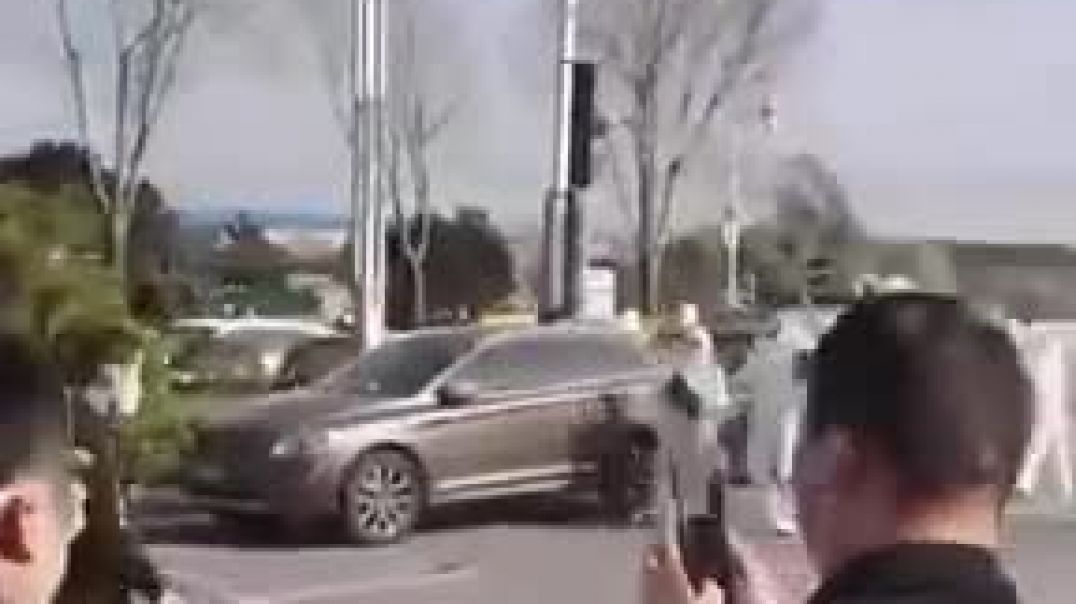

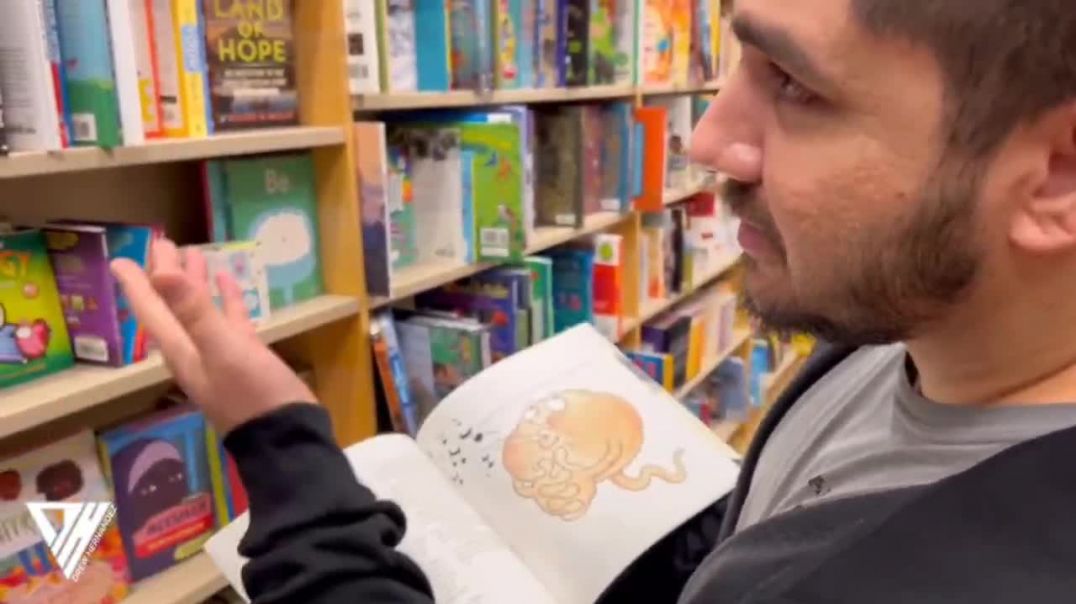
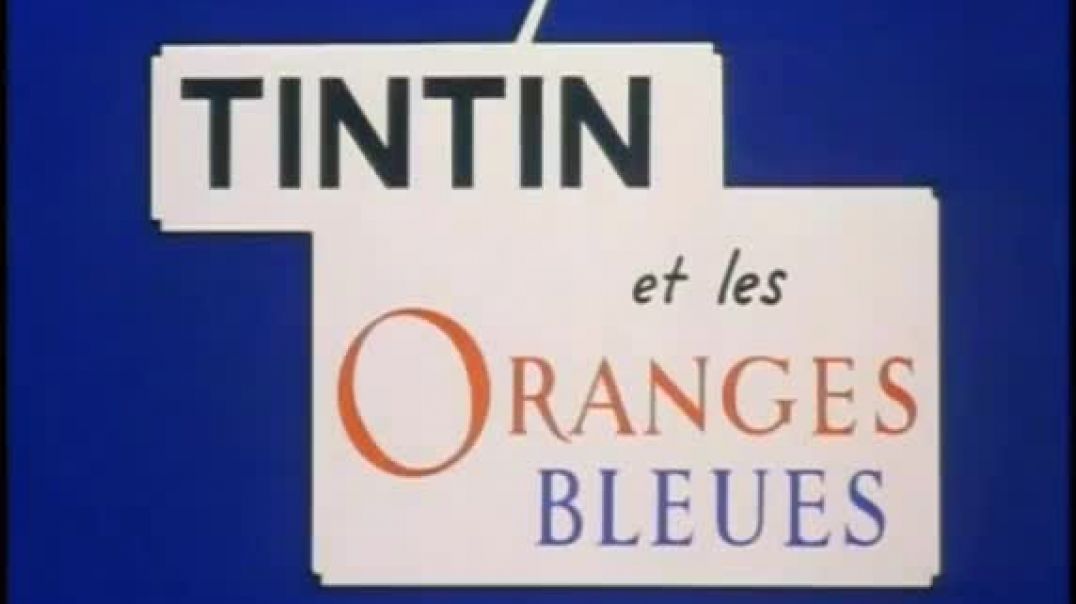

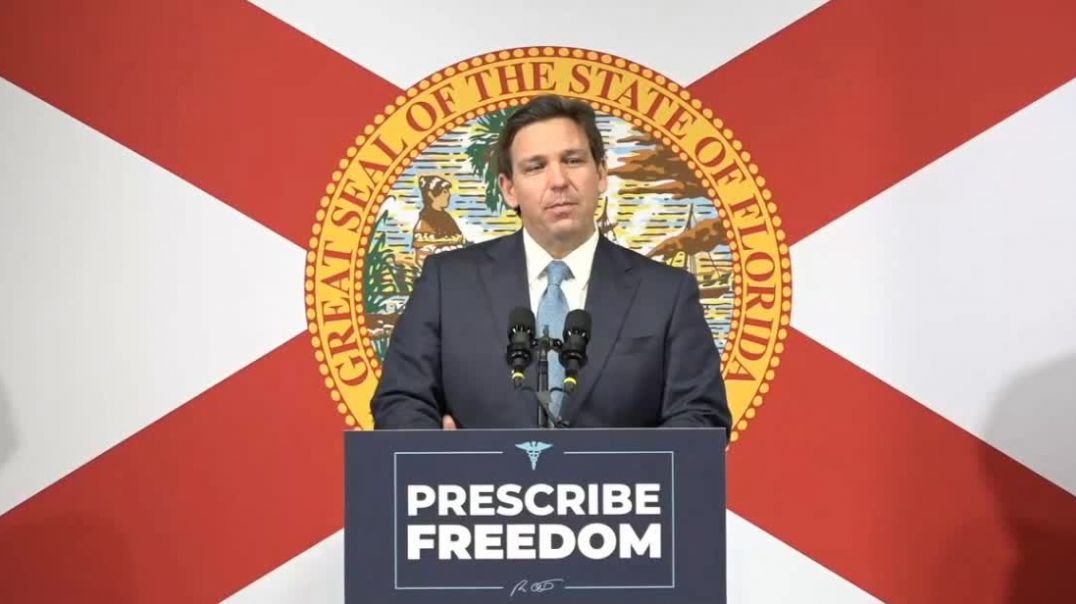
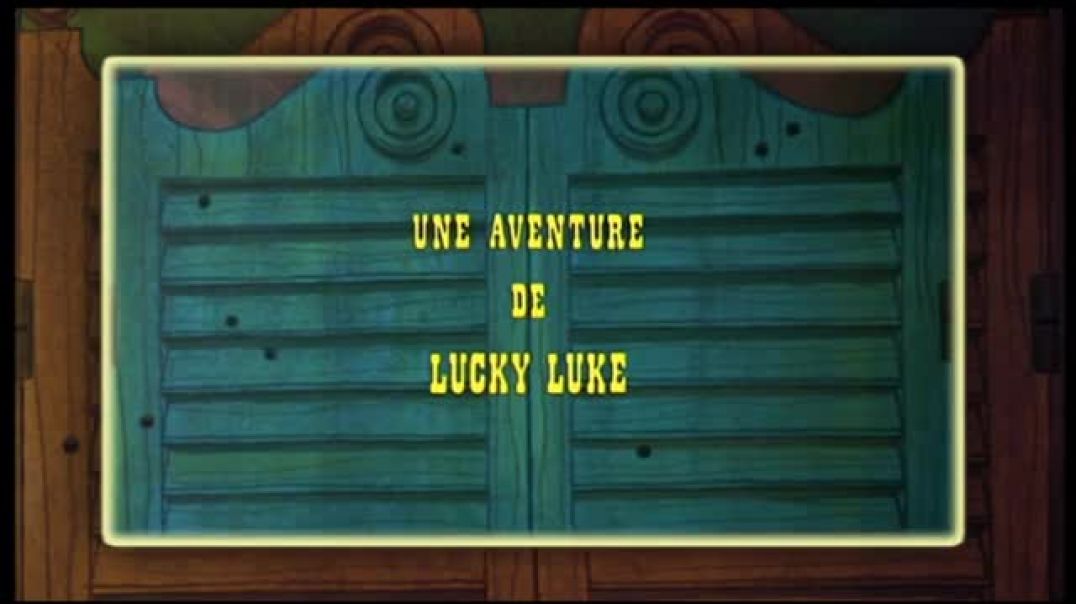


![RMGO Testimony on Colorado's SB 279, the Ghost Gun Ban [MIRROR]](https://truthtube.video/upload/photos/2023/05/H4rYj2JR5ykHFjFEsjXd_20_1a266ff6ad6bee845ce974cafb8612c1_image.jpg)
